John Hurrell – 8 July, 2024
The inventiveness of his hybrid forms (usually based on computer programming) gives much character to Richard Killeen's at times wonderfully strange morphological configurations. His inventive use of painted, drawn on or collage-added aluminium shapes has been around for over forty years now, and the relationship of each individual component to the surrounding group often invites speculation. As does also, the show's title, which in this case suggests a nonchalant indifference to selection choice not really evident in the usual presentations.
Auckland Tamaki Makaurau
Richard Killeen
Hang in any order
Curated by Gow Langsford
3 July - 27 July 2024
Of the twelve diverse ‘cutout’ works presented here in Gow Langford’s inner city Auckland space, nine are groups, and three are distinctive solo shapes resplendent in isolation—all made between 1981 and 2002. One does not feature colour at all, but uses a range of delicate greys entirely. Most are surprisingly painterly in their textures, using thin alkyd that revels in showing its brusherly or powdery application. Something you don’t often notice in photographic documentation.
The inventiveness of his hybrid forms (usually based on computer programming, sometimes appropriated) gives much character to Richard Killeen’s at times wonderfully strange morphological configurations. His inventive use of painted, drawn on or collage-added aluminium shapes has been around for over forty years now, and the relationship of each individual component to the surrounding group often invites speculation. As does also, the show’s title, which in this case suggests a nonchalant indifference to selection choice not really evident in the usual presentations. The absolute openness of ‘any’ is not actually applicable here. Genuine chance doesn’t get a look-in.
Killeen’s densely packed formations are usually in rectangular or oval formats. These horizontal or vertical clusters can suggest words in a text found in a book, presented in single or double page spreads, where wobbly horizontal lines of words are vaguely implied. The horizontal ovals could be speech bubbles.
The evenness of this holistic communal interaction depends on the range of value, chroma, planar area and morphological complexity-and the efficacy of the chosen number of densely positioned images. The group hangs installed by the artist favour balance and a consistent holism, not lopsidedness or overall shapes beyond the usual collectively assembled rectangles or ovals. Within these shape-oriented communities on the white wall the elements jostle and compete for the viewer’s attention—in partnership or competition with others in close proximity—and through their interaction generating negative spatial configurations in between.
There are many ways of understannding these assortments of metal images. One way, promoted by writers like Tony Green and Ian Wedde, is to view them as history paintings that are in essence allegorical and devoid of narrative. Another approach (if you believe quality art is preoccupied with creating a codable meaning and not new sensation) is that such collected cutouts, in the viewer’s imagination, represent parts of speech like nouns (subject or object), gerunds (nouns formated as verbs), or tangential adjectives and adverbs. Sequentially these could make rudimentary sentences, be they all strangely coded like a rebus. Collectively they could even create a narrative of sorts.
Killeen has often stated language is not neutral, but these groups of images make the onlooker aware of how the parts fit together in juxtaposition—perhaps even more than what the artist has anticipated—and that there is a political dimension to each unit’s position in the clustered group structure or occasionally tightly ordered grid. Hierarchies are present—even when compositions appear to be evenly visually balanced.
For example, an image placed in a centrally positioned location deep inside the group, is usually better at being noticed than those located at the edges, top is better than bottom, and a right way up image is better than one being inverted. There is no even political tension spread throughout, consequently meaning changes when images shift around. There is an organisational syntax where each arrangement of elements has its own semantic emphasis and particular meaning.
Outside of issues about what these collective arrangements might mean, the individual elements are great fun to examine by themselves (particularly the hybrids): the way assorted shapes blend within; what their sources are; how colour operates. Some nuanced monochromatic silhouetted images are complete solo works. In this great show by a dealer gallery that happens to be not representing the artist, a curious viewer can wander from work to work and pick out single elements to contemplate, puzzling over their wild potential combinations, joyously speculating over interpretation.
John Hurrell
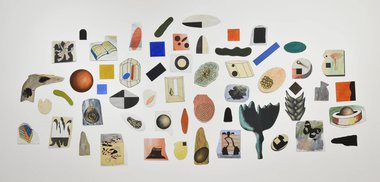
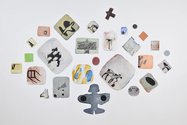
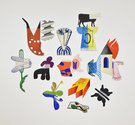
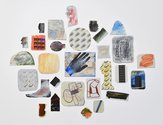
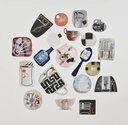
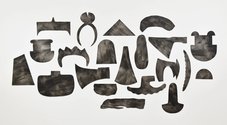
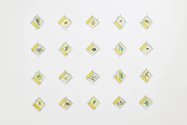
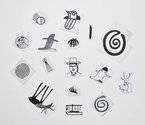


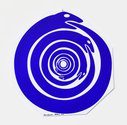
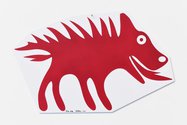

 Two Rooms presents a program of residencies and projects
Two Rooms presents a program of residencies and projects Advertising in this column
Advertising in this column



This Discussion has 0 comments.
Comment
Participate
Register to Participate.
Sign in
Sign in to an existing account.